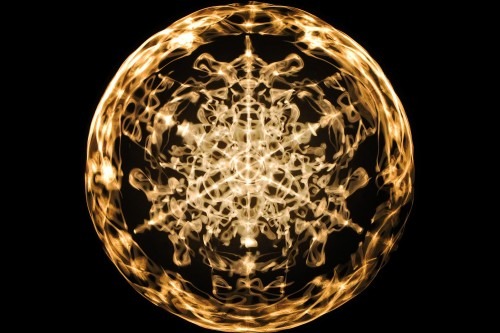
Psychoacoustics
If a tree falls in a forest and there is no one there to hear it, does it make a sound? Assuming there is actually no living being in the forest (which is not likely), the answer is no, it does not make a sound. There need to be three things present for there to be a sound:
- A source like a bird, a speaker, or a falling tree that causes vibrations;
- a medium, like air or water, for the vibration to travel through;
- an ear attached to a brain. A sound is what your brain makes out of vibrations in the medium that are sensed by the ear.
Psychoacoustics is the study of how the brain reacts to, and processes sound. The perception of sound is a very detailed, complex event. Much of how our brain handles sound is inherited, with eons of previous human experience embedded in our genetic makeup. Most of that experience was built on the need to survive. Sound was, especially at night, the primary means of knowing what was going on around you.
We use both the conscious and unconscious parts of our brain to process sound. That idea applies to more than just the act of hearing. The sound of the human voice, for example, is processed by a different part of our brain than the sound of a saxophone. That’s because a saxophone has never lied to you. But when someone speaks, we immediately begin detecting for signs of truth or deceit… their emotional state… friend or foe. Sound also invokes and draws upon a vast library of our own personal experiences. A particular sound may bring back a memory that had not been uncovered for many years. The sound of a morning dove suddenly reminds you of when you were a child playing in your grandmother’s yard, and once you have had a child, the sound of any child crying immediately gets the brain working overtime.
Our efforts have focused on using natural sounds and spaces to trigger memory, imagination, and a relaxed state of being. By creatively and artistically manipulating these natural events, we can efficiently take advantage of the progressions that occur in nature to calm and inspire you. The science of psychoacoustics is rarely considered when creating audio for the masses. With our Journeys and Natural Spaces, it is the primary focus.
It should also be noted that there is a dark side to psychoacoustics: noise pollution. Most of us are constantly bombarded by sounds that create stress. Phones, traffic, planes, booming car stereos, the list is seemingly endless. For many people, this noise is constant, although they block most of it out on a conscious level. But the subconscious is fully exposed to it and is constantly processing it. This creates tension. Allowing your subconscious to be free from noise pollution for ten or twenty minutes each day can have a dramatic positive effect on your heart rate, blood pressure, and state of mind.